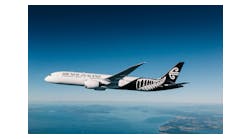July 12--U.S. air travelers terrified of disasters like the crash of Asiana Flight 214 face a frustrating dilemma when trying to avoid airlines with scary safety records.
That's because the Federal Aviation Administration refuses to publicly rank air carriers on safety. The agency does list countries with substandard aviation-safety rules. But it still allows their airlines to fly into the U.S. and offers no guidance on their relative risk to passengers.
Consumer advocates contend the flying public deserves better.
"It's maddening," said John King, an air-travel safety advocate and former airline mechanic who blew the whistle on problems at now-defunct Eastern Airlines. "What the heck is the public supposed to
do," he added, "if the cop on the beat isn't doing its job?"
Yet the FAA sees no reason to issue carrier-safety ratings.
"There currently is no evidence in accident data that would support the ranking of individual airlines based on their safety records," the agency insists on its website. And because air accidents are rare, it adds, they provide no guide "to consumers seeking to make safety-enhancing comparisons for current or future travel choices."
Asked why the agency couldn't rate airlines by combining accident data with such factors as maintenance and training deficiencies, the relative age of their planes and how often they have near misses with other aircraft, an FAA spokeswoman who said she was forbidden from being
quoted by name dismissed the idea out of hand.
Passengers shouldn't worry, she said, since "most airlines operate well above FAA standards." And because FAA inspectors monitor carriers, she added, "we know exactly what's going on in each airline."
For the 600-or-so foreign airlines that fly in the U.S., the FAA does evaluate the "safety oversight standards" of the countries where they are based. A total of 24 "category 2 countries" -- including Bangladesh, Guyana, Serbia and Nicaragua -- fail to meet FAA guidelines. But those nations' airlines can still fly in the U.S. "under heightened surveillance" by the FAA, according to its spokeswoman.
No airlines from those 24 countries currently fly into Bay Area airports.
Richard Kebabjian, whose website planecrashinfo.com tracks airline disasters, acknowledges it's a tough task to advise consumers which carriers to avoid.
"There are many factors that contribute to the safety rating of an airline that include accident history, maintenance and operational procedures, types of training programs, age of fleet, specific routes flown and just plain luck," he said. "Then there are different ways to calculate risk. Is it number of flights, number of passenger miles flown or number of hours in the air? How many years do you go back? Five years, 10 years, 20 years?"
Others note that airlines aren't always at fault when their planes crash, as was evident during the Sept. 11, 2001, terrorist attacks.
Some air-travel websites offer safety rankings.
Airlineratings.com uses stars to rate airlines -- with the best getting seven -- based on whether they've been grounded by authorities, had fatalities, are banned by the European Union and other factors.
A private German website (www.jacdec.de), run by the Jet Airliner Crash Data Evaluation Centre, offers different rankings based on "thousands of entries of all kinds of safety occurrences since the beginning of commercial aviation." Of the 60 airlines it ranks for safety, China Airlines is dead last. But, in an illustration of the lack of uniform standards for airline safety rankings, China Airlines gets the top seven stars from Airlineratings.com.
Similarly, South Korea's Asiana Airlines -- whose crash in San Francisco on Saturday killed two and injured dozens -- ranks a relatively low 46 on the German site, but gets six stars from Airlineratings.com.
Todd Curtis, founder of the website AirSafe.com, said all carriers generally "have to have their stuff together" when operating in other counties. But he said it can be precarious flying foreign-based airlines that operate solely within their own borders, because some countries lack even rudimentary safety standards for domestic flights.
Comparing those airlines is especially difficult because it's hard to obtain safety records for many foreign carriers, said Mary Schiavo, an aviation lawyer and former U.S. Transportation Department inspector general, who also favors having the FAA publish such ratings.
Trying to rank airlines herself a few years ago, she discovered "there was no one database of all the international accidents." So Schiavo advises travelers to stick with airlines flying out of regions with the most rigorous regulations, such as Europe, New Zealand, Australia, Japan, Canada and the United States.
But some consumer advocates say passengers shouldn't assume U.S.-based airlines are risk free. They contend the carriers often fail to report potential maintenance or other dangers involving their planes to the FAA and are rarely punished for such omissions because the agency is cozy with the industry.
Although the FAA denied the accusation, "this issue is something FlyersRights.org has fought to change since its inception," said Kate Hanni, who founded the Napa-based group in 2006. Contending the agency too often leaves it to airlines to self-report safety concerns, she added, "does anyone see a problem with the fox guarding the henhouse?"
Contact Steve Johnson at [email protected] or 408-920-5043. Follow him at Twitter.com/steveatmercnews.
rating airline risk
Here's a list of the world's 10 safest airlines as rated by the Jet Airliner Crash Data Evaluation Centre, a private German website, www.jacdec.de. These rankings don't always agree with those from other websites, such as www.Airlineratings.com.
1. Finnair
2. Air New Zealand
3. Cathay Pacific
4. Emirates, of the United Arab Emirates
5. Etihad Airways, of the United Arab Emirates
6. EVA Air, of Taiwan
7. TAP Portugal
8. Hainan Airlines, of China
9 Virgin Australia
10. British Airways
Copyright 2013 - San Jose Mercury News




